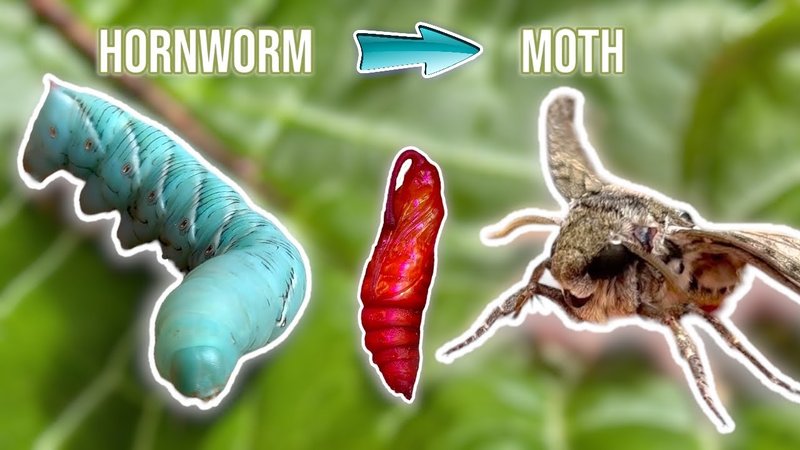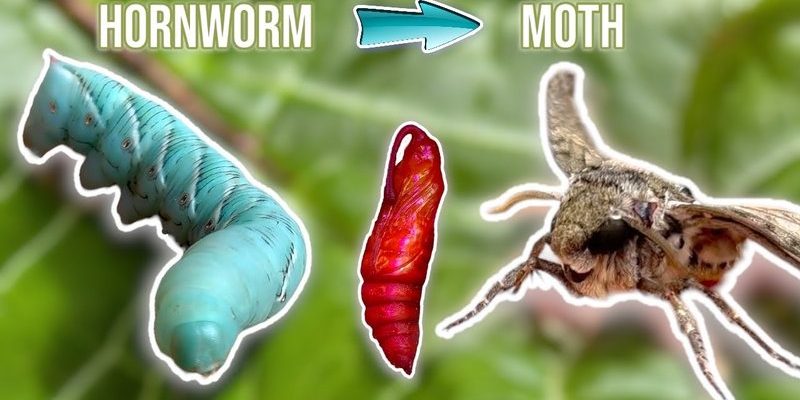
Hornworms, particularly the species known as *Manduca sexta*, are the larval stage of the tobacco hornworm moth. They start from eggs laid on plants and can grow to impressive sizes in just a few weeks. Imagine a tiny creature that can swell into a hefty green worm in no time. Observing their growth can give you a lot of insight into not only their life cycle but also how they can impact your plants.
Let’s take a closer look at their growth rate, their life cycle, and what you can do if they invade your garden. Buckle up, because we’re about to explore the world of hornworms!
The Lifecycle of Hornworms
To understand how fast hornworms grow, we first need to know their lifecycle. Hornworms start as tiny eggs, which are usually laid on the underside of leaves. Depending on environmental conditions, these eggs hatch into larvae (the hornworms) after about **3 to 10 days**. It’s like a tiny miracle, watching life burst forth from these diminutive specks.
Once they hatch, hornworms begin their ravenous journey. Their main goal? To eat as much as possible. During this stage, they go through several phases called instars. A hornworm goes through about **five instars** over a couple of weeks. In each phase, they slough off their skin to accommodate their growing bodies—kind of like a teenager outgrowing their clothes!
So, it’s not just about how fast they can grow; it’s about how much they transform. After about **three to four weeks**, these little munchers can grow from a mere few millimeters to about **4 inches long**. Imagine doubling your height at a rapid pace; that’s what these hornworms do!
The Speed of Growth: Factors at Play
You might be wondering, “What makes hornworms grow so quickly?” Several factors contribute to their rapid development. The most significant are **temperature, food availability, and humidity**.
1. **Temperature**: Hornworms do best in warm conditions, typically between **75°F and 85°F**. When temperatures drop, their growth slows down. So, if you’ve got a warm, sunny garden in the summer, it’s like setting the stage for a growth spurt!
2. **Food Availability**: Hornworms primarily feast on plants like tobacco, tomato, and pepper. The more they eat, the faster they grow. If you’re gardening, keep an eye on your plants; a single hornworm can munch through a lot in a day.
3. **Humidity**: High humidity can help speed up their growth. Think of it this way: if you’re a kid running around in a summer pool, you’re likely to splash around more in warm, humid air than in dry conditions.
By keeping an eye on these conditions, you can better understand why your hornworms are thriving (or not) in your garden.
Once hornworms have achieved their maximum size, they continue to munch for another week or so before they pupate. This process takes about **7 to 14 days**. During this time, they transform into a pupa or chrysalis, which hangs hidden in the soil or among plant debris.
After a couple of weeks, they emerge as adult moths. The whole lifecycle from egg to adult moth can take about **four to six weeks**, depending on environmental conditions. It’s like watching a mini-drama unfold right in your backyard!
But here’s the catch: while they’re great at growing, they can also be less than friendly to your plants. The rapid growth often results in significant plant damage, especially if you have multiple hornworms.
Identifying Hornworms: What to Look For
If you want to keep an eye on how fast hornworms grow, it’s essential to identify them early. You’ll typically find hornworms on the undersides of leaves, often in clusters. They are recognizable by their bright green color, which makes them blend seamlessly with tomato and tobacco plants.
Here are a few key traits to look for:
- Color: Predominantly green, which helps them camouflage among leaves.
- Size: They can grow up to 4 inches in length, so they become pretty noticeable.
- Horn: The distinctive horn on their rear end resembles a small spike, hence their name.
- Movement: They often sway back and forth, mimicking the leaves in the wind. This motion can sometimes make them hard to spot.
If you notice these signs, it’s worth checking your gardening routine and how you can prevent them from munching all your plants.
Dealing with Hornworms: Should You Protect or Remove?
When you find hornworms in your garden, you have a choice to make: protect them as part of nature’s cycle or remove them to save your plants. Honestly, it depends on your gardening goals.
If you’re an organic gardener, you might feel inclined to let nature take its course. Hornworms can eventually turn into beautiful moths, contributing to the ecosystem. But if your primary concern is your vegetable garden, you might want to take action.
Here are a few methods to deal with hornworms:
- Handpicking: If you see them, just pick them off! It’s tedious but quite effective.
- Neem Oil: Spray this on your plants to deter hornworms without harming beneficial insects.
- Beneficial Insects: Introduce natural predators like wasps, which lay eggs in hornworms and help control their population.
Think of it as finding a balance—protecting your plants while giving a nod to the cycle of life.
The Impact of Hornworms on Your Garden
You might be asking, “Why does this even matter?” Understanding how hornworms grow can help you protect your garden. These little green munchers can wreak havoc on your plants if left unchecked.
If you have a small garden, a few hornworms might be manageable. But if you have a larger garden or multiple plants, the damage can stack up. They can strip a plant of its leaves in just a few days, leaving behind bare stems.
Prevention is key! Regularly checking your plants for signs of hornworms—like missing leaves or droppings—can help you catch them early.
In conclusion, hornworms exhibit some incredible growth, transforming from tiny eggs to sizeable larvae in just a few weeks. Their rapid expansion is influenced by various factors, including temperature and food availability. This growth might seem fascinating, but it can have significant consequences for your garden.
Whether you choose to protect your plants or allow nature to take its course, being aware of how quickly hornworms grow can make all the difference. By keeping an eye on your plants and their environment, you can enjoy the wonders of nature while safeguarding your garden. Don’t forget to enjoy the little green guys on their journey; after all, they’re just doing what nature designed them to do!

